| High
Eyepoint Oculars and the Digicam
Thoughts about this useful combination By Paul James (uk)
|
| High
Eyepoint Oculars and the Digicam
Thoughts about this useful combination By Paul James (uk)
|
This is disheartening, and though the problem varies in extent from one digicam to the other, the principle cause of this dilemma is that the eyepiece's external 'Ramsden's disc' is not high enough to penetrate the camera lens optics. This is especially frustrating for those with large zoom optics on their cameras. Those with fixed focal length camera lens fair a little better.
Potential Solutions
There are two ways around this. One is to buy a relay lens specially designed to optically couple both the camera and the microscope tube or eyepiece. They are expensive and those which slip into the tube without the need for the eyepiece might not be suitable for both achromatic, fluorite and apochromatic objectives?
My approach, the second alternative, was that the high eyepoint eyepiece could not only provide the necessary high Ramsden disc suitable for the camera, but also that it was in itself a very useful and convenient eyepiece in the first instance. Two eggs in one basket.
I purchased an old pair of Leitz Periplan x 10 compensating high eyepoint oculars and found them to be ideally suited to digicam photography, allowing, by use of the camera's zoom, to capture the whole field or a part thereof. As observational eyepieces they have a somewhat moderate field, but a very comfortable eye to eyepiece distance for spectacle wearers, for which they were originally designed. They have eye lenses which are deeply concave :-
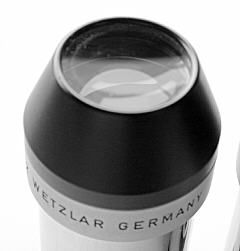 |
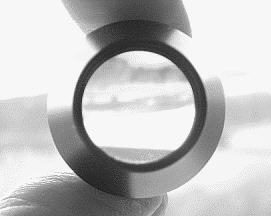 |
(Not coupled for demonstration purposes)
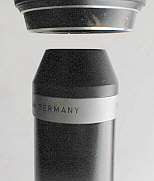 |
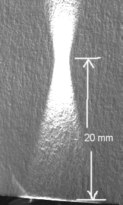 |
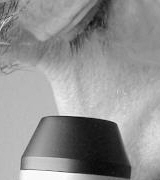 |
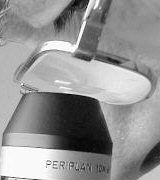 |
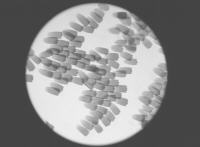 |
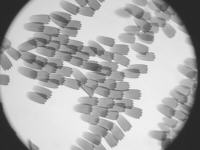 |
 |
Looked after they will last a lifetime at
least, and any concerns regarding cost should be easily displaced by the
knowledge that our eyes alone cost a wee bit more !
| All comments welcomed to Paul James. |
Please report any Web problems or offer general comments to the Micscape Editor.
Micscape is the on-line monthly magazine
of the Microscopy UK web site at Microscopy-UK
WIDTH=1